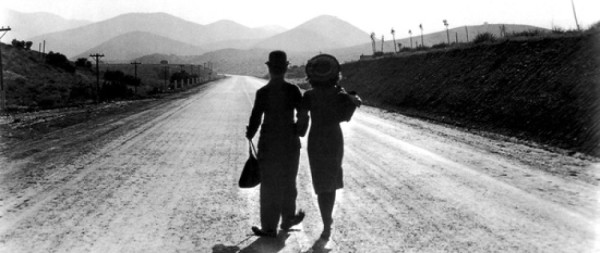The Best Years of Our Lives
Directed by William Wyler
Written by Robert E. Sherwood from a novel by MacKinlay Kantor
1946/USA
The Samuel Goldwyn Company
Repeat viewing; DVD in collection
#194 of 1001 Movies You Must See Before You Die
[box] Fred Derry: How long since you been home?
Al Stephenson: Oh, a couple-a centuries.[/box]
I have seen this coming home story so often it seems like an old friend — one that it is always a pleasure to catch up with. I can’t think of a single thing I would change about the film.
By chance, de-mobilized service men Al Stephenson (Fredric March), Homer Parrish (Harold Russel), and Fred Derry (Dana Andrews) hitch a ride on the same military plane to their home town of Boone City. The men could not be more different. The highest ranking of the three is Fred, who is a captain and ex-Air Force gunner. Al was a sergeant in the infantry and Homer is a lowly seaman returning home from the hospital after having lost his hands during the bombing of his ship. They are all united by their war experience and their common anxiety about what awaits them at home.
As the men return to their homes we learn that they are as different by class as they are by rank. Derry comes from the wrong side of the tracks and was a soda jerk before the war put him in a fancy uniform and allowed him to win his blonde bombshell wife (Virginia Mayo). Homer is solidly middle class and all-American returning to his family who live in a house with a white picket fence. Al is an ex-banker who is dropped off at a swanky apartment to reunite with Milly (Myrna Loy), his wife of twenty years, and two children, Peggy (Theresa Wright) and Rob.
All three men are troubled by their reception the very first day. Al gets a lecture from his son, who is sympathetic with the Japanese after the atom bomb, and he has trouble breaking the ice with the women folk. Fred finds his wife has moved out of his parents home and gone back to work at a nightclub. Homer can’t bear the pity of his family. All of the men end up drinking away their sorrows at the bar owned by Homer’s uncle Butch (Hoagy Carmichael). Al has dragged Milly and Peggy along and Peggy and Fred are drawn to each other.
The men’s readjustment is slow and painful. Al develops quite the drinking problem as he tries to get used to being a conservative banker. Homer has trouble opening up to anybody and it looks like he will let his engagement to Wilma (Cathy O’Donnell) slip by the wayside. Fred, lacking any applicable skills, is forced to take a job working under the man who formerly assisted him at the drugstore. His wife has little use for him without his uniform or money and Al puts the kabosh on a budding extramarital relationship with Peggy. We follow the men until each gradually comes to terms with civilian live.
I have absolutely no complaints about anything in this movie and I love it as well so I guess I can call it perfect. It is amazing how fast the three hours flies. It seems to just take that long for us to get to know the characters well enough for their fates to matter. I always cry at different points. It usually begins with the scene where Milly is serving Al his breakfast in bed, carries on through Wilma putting Homer to bed, and culminates in a big way when Fred is sitting in the war surplus bomber.
Myrna Loy amazingly was never even nominated for an Oscar. She is the equal to the Oscar-winning Fredric March in this film and was robbed. There was never anyone better at playing a well-loved wife and she exceeded all expectations here.
The Best Years of Our Lives won Academy Awards for: Best Picture; Best Actor (March); Best Supporting Actor (Russell); Best Director; Best Writing, Screenplay; Best Film Editing; and Best Music, Scoring of a Dramatic or Comedy Picture (Hugo Friedhofer). It was nominated for Best Sound, Recording. Harold Russell won an Honorary Award for: “For bringing hope and courage to his fellow veterans through his appearance in The Best Years of Our Lives.” I agree with all these awards, though it would have been nice if the Academy could have been satisfied with giving Russell the Honorary Award and saved the Supporting Actor statuette for Claude Rains in Notorious.
Trailer






